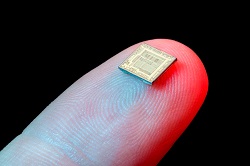A quantum leap for silicon chips: Spin-photon coupling now a reality
Quantum theory began to take shape over a century ago and has since been the focus of many studies and observations. Yet, it’s only in recent years that scientists began to envision the use of quantum mechanics in technology, and more specifically in computing. TU Delft, the university hosting the QC-LAB project, has joined the race to build efficient quantum computers, with significant results. The quantum phenomena that allow us to speak of revolutionising the world of computers as we know it are superposition and entanglement. In a classical computer, a bit can have one of two values: a one or a zero. In a quantum computer, the basic unit of information, known as a quantum bit, or qubit, can be a one, a zero, or both a one and a zero at the same time. This condition of being in multiple possible states is known as superposition. As qubits are added to a computer, its power increases exponentially. But, to benefit from this increase in power, qubits need to be linked, even if they are separated by a large distance. This phenomenon is referred to as quantum entanglement. The computer of the future By harnessing phenomena such as superposition and entanglement, tomorrow’s quantum computers will be able to solve problems that would take current mainframe computers countless years to do, such as factorising large prime numbers or searching extensive unsorted data sets. However, for a quantum computer to be able to make such useful computations, it would require lots of qubits, and it’s precisely this need for large numbers of qubits that poses a challenge. These fragile units of quantum information must be able to communicate well if these computers are to be a success. The promise of silicon Quantum chips store information in qubits and are made of silicon. Widely used in electronic devices, silicon makes lengthy storage of information possible and therefore holds promise as a quantum technology material. But, scientists have yet to figure out how to increase the number of physics (spin) qubit systems. As described in their paper published in the journal ‘Science’, the project’s researchers have taken a step towards addressing this issue by showing that a single electron spin and a single microwave photon can be coupled on a silicon chip. In the authors’ own words, ‘[t]he electron spin is trapped in a silicon double quantum dot and the microwave photon is stored in an on-chip high-impedance superconducting resonator.’ They add: ‘The electric field component of the cavity photon couples directly to the charge dipole of the electron in the double dot, and indirectly to the electron spin, through a strong local magnetic field gradient from a nearby micromagnet.’ Researchers said that their results provide a route to realising large networks of quantum dot-based spin qubit registers. This quantum chip with reliable silicon qubits is an important milestone on the road to achieving scalable quantum calculations. The QC-LAB team’s goal is to develop a 13-qubit circuit that will demonstrate back-and-forth quantum state transfer between qubits. For more information, please see: QC-LAB
Countries
Netherlands



